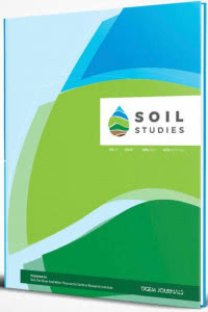Impacts of Different Drainage Managements on Water Saving, Salt Balance and Nutrients Losses in the Harran Plain, South East Turkey
Güneydoğu Anadolu Bölgesi, Harran Ovasında Farklı Drenaj Yönetimlerinin Su Kazanımı, Tuz Dengesi ve Bitki Besin Element Kayıplarına Etkisi
___
- Ayars J E, Christen E W, Hornbuckle J W (2006). Controlled drainage for improved water management in arid regions irrigated agriculture. Agricultural Water Management 86 (2006) 128-139
- Bahceci İ, Çakır R, Nacar A S, Bahçeci P (2008). Estimating the effect of controlled drainage on the soil salinity and irrigation efficiency, using SaltMod, in Harran plain. Turkish Journal of Agriculture and Forestry 32: (2) 101-108
- Dayem A D, Ritzema H P (1990). Verification of drainage design criteria in the Nile Delta, Egypt. Irrigation and Drainage Systems, 4, 2, pp 117-131.
- DMİ (2012). Meteorolojik veriler, Devlet Meteoroloji GenelMüdürlüğü. ANKARA
- Dugas W A, Weyer W S, Barrs H D, Fleetwood, R J (1990). Effects of soil type on soybean crop water use in weighing lysimeters II. Root growth, soil water extraction and watertable contributions. Irrigation Science, 11:77-81.
- Evans R, Gilliam J W, Skaggs W (1999). Controlled Drainage Management Guidelines For Improving Drainage Water Quality. Published by: North Carolina Cooperative Extension Service Publication Number: AG 443 Last Electronic Revision: June 1996 (KNS)
- Evans R O, Skaggs R W (1987). Operational and Management Guidelines for Water Table Management Systems in North Carolina, Proceedings 3rd International Workshop on Land Drainage, Columbus, Ohio.
- Fouss, J L, Skaggs R W, Fausey, N R , Pıtts D J (2002). American Society of Agricultural and Biological Engineers. Implementing Controlled Drainage Technology to Reduce Nitrate Losses in Drainage Water. Drainage VIII, Proceedings of the 8th International Drainage Symposium, 21-24 March, 14- 16p. Sacramento, CA, U.S.A.
- Kruse E G, Young D A, Champion D F (1985). Effects of saline watertable on corn irrigation. IN. C.G. Keyes T.J. Ward (ed.) Development and Management Aspects of Irrigation and Drainage systems. [Proceedings of Specialty Conference ed.]. ASCE, New York. P. 444-453
- Madramoto C A, Wiyo K A, Enright P (1992). Nutrient lossesthrough tile drains from potato fields. Applied Engineering in Agriculture. 8:639-646.
- Meyer W S, White B, Smith D (1996). Water use of lucerne over shallow watertables in Australia. Proceedings of International Conference, Evapotranspiration and Irrigation Scheduling, Nov.3-6, 1996, San Antonio, Texas, Ed. C.R. Camp, E.J. Sadler, R.E. Yoder, ASAE. Joseph, MI, pg 1140-1145.
- Ramoska E, Bastiene N, Saulys V (2009). Evaluation of controlled drainage efficiency in Lithuania. Irrigation and drainage.10.1002/ird.548.
- Soppe R W, Ayars J E, Grismer M E (2002). Using capacitance probes to measure soil water in lysimeters with shallow saline ground water. In: Proceedings of the First International Symposium on Soil Water Measurement using Capacitance, Impedance and Time Domain Transmission (TDT). Held at the USDA-ARS Beltsville Agricultural Research Center, in Beltsville, Maryland, November 6, 7, and 8, 2002.
- Tan C S, Durry H F, Ng H Y F, Gaynor J G (1999). Effect of controlled drainage and subirrigation tile drainage nitrate loss and crop yield at the farmscale. Canadian Water Resources Journal. 24(3):177-186.
- ISSN: 2146-7072
- Yayın Aralığı: 2
- Yayıncı: Toprak Gübre ve Su Kaynakları Merkez Araştırma Enstitüsü
Tekirdağ Merkez İlçesindeki Bazı Akarsu Yataklarındaki Toprakların Özellikleri
Bahadır ATMACA, Duygu BOYRAZ ERDEM
Ali İMAMOĞLU, Muhammed BAHADIR, Orhan DENGİZ
Rainwater Harvesting for Urban Ecology: Mustafa Uysal Park Case
Halil KON, Lina AL BITAR, Hailemelekot KIDANE, Mulugheta SOLOMON, Justyna WIECZYNSKA, Sereen BOU ZEİN EL DEEN
Havva ŞENDEMİRCİ, Ahmet KORKMAZ, Güney AKINOĞLU
